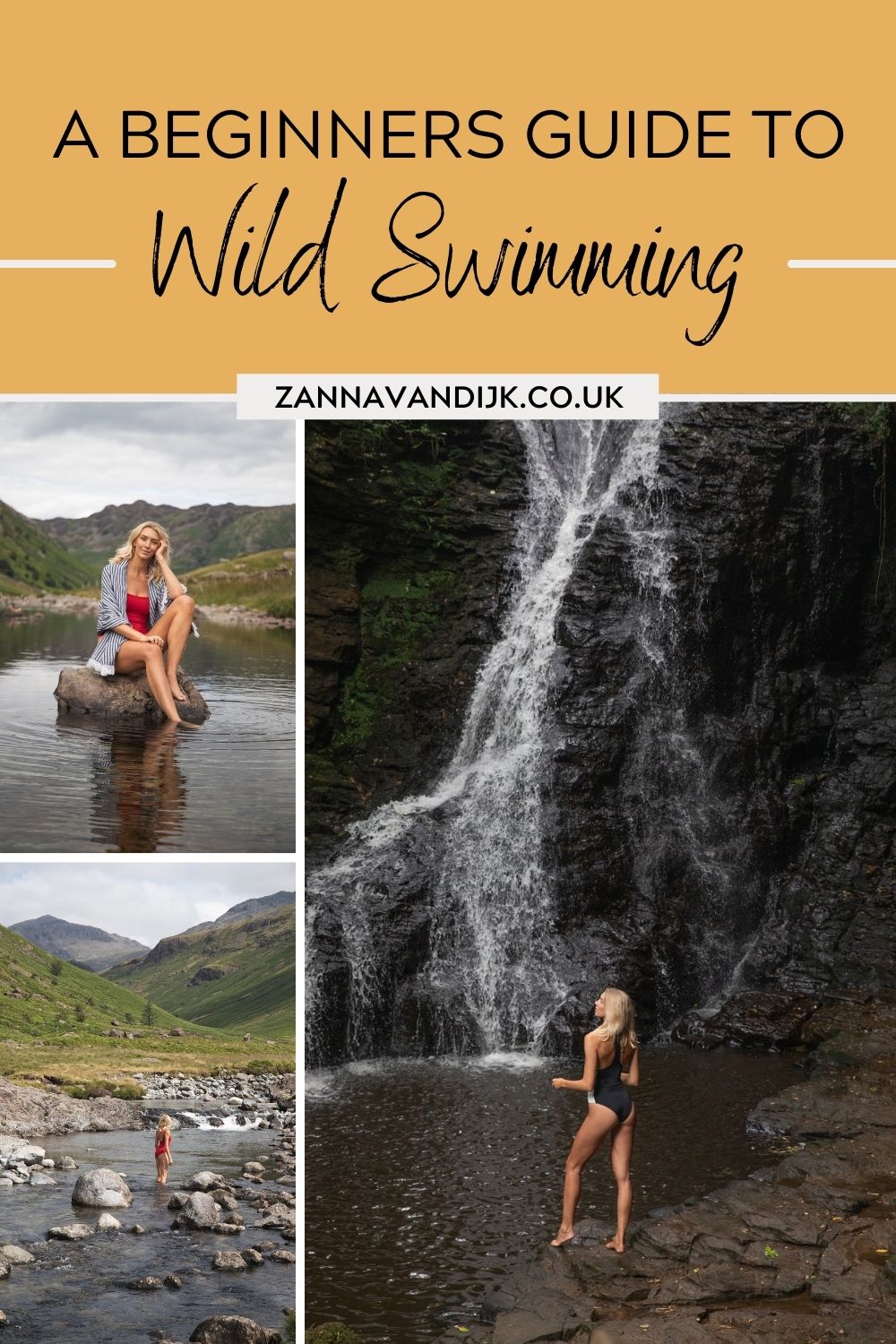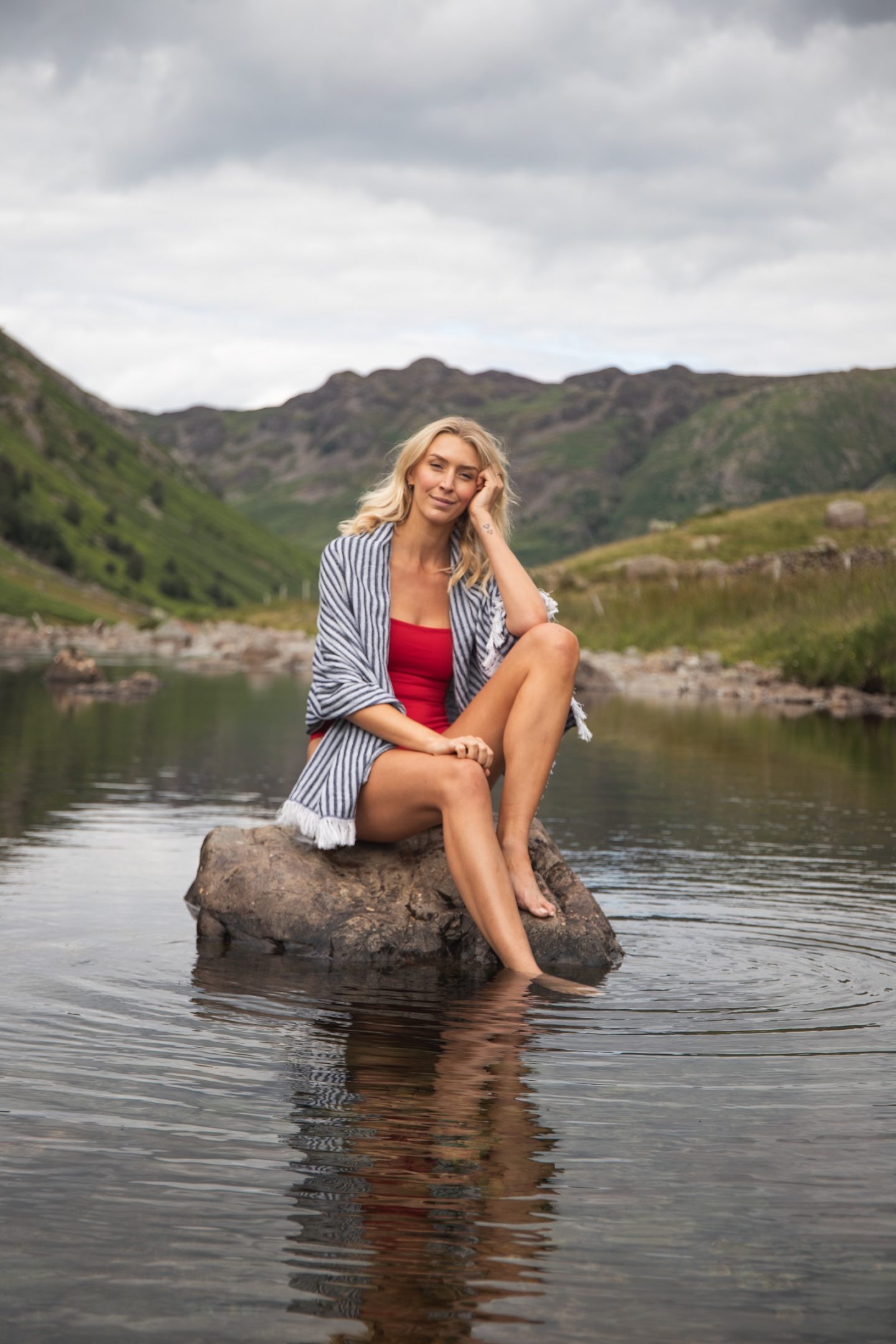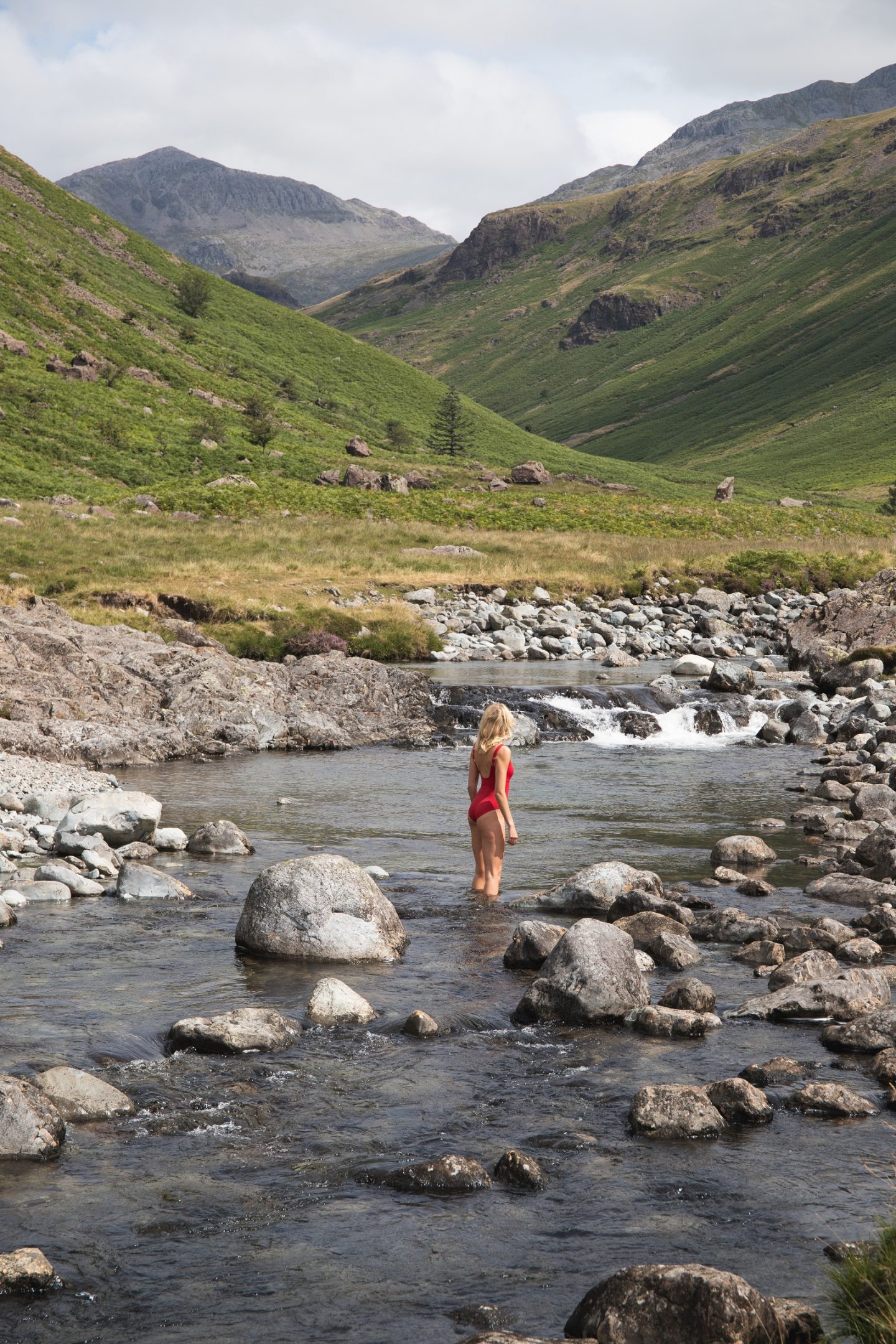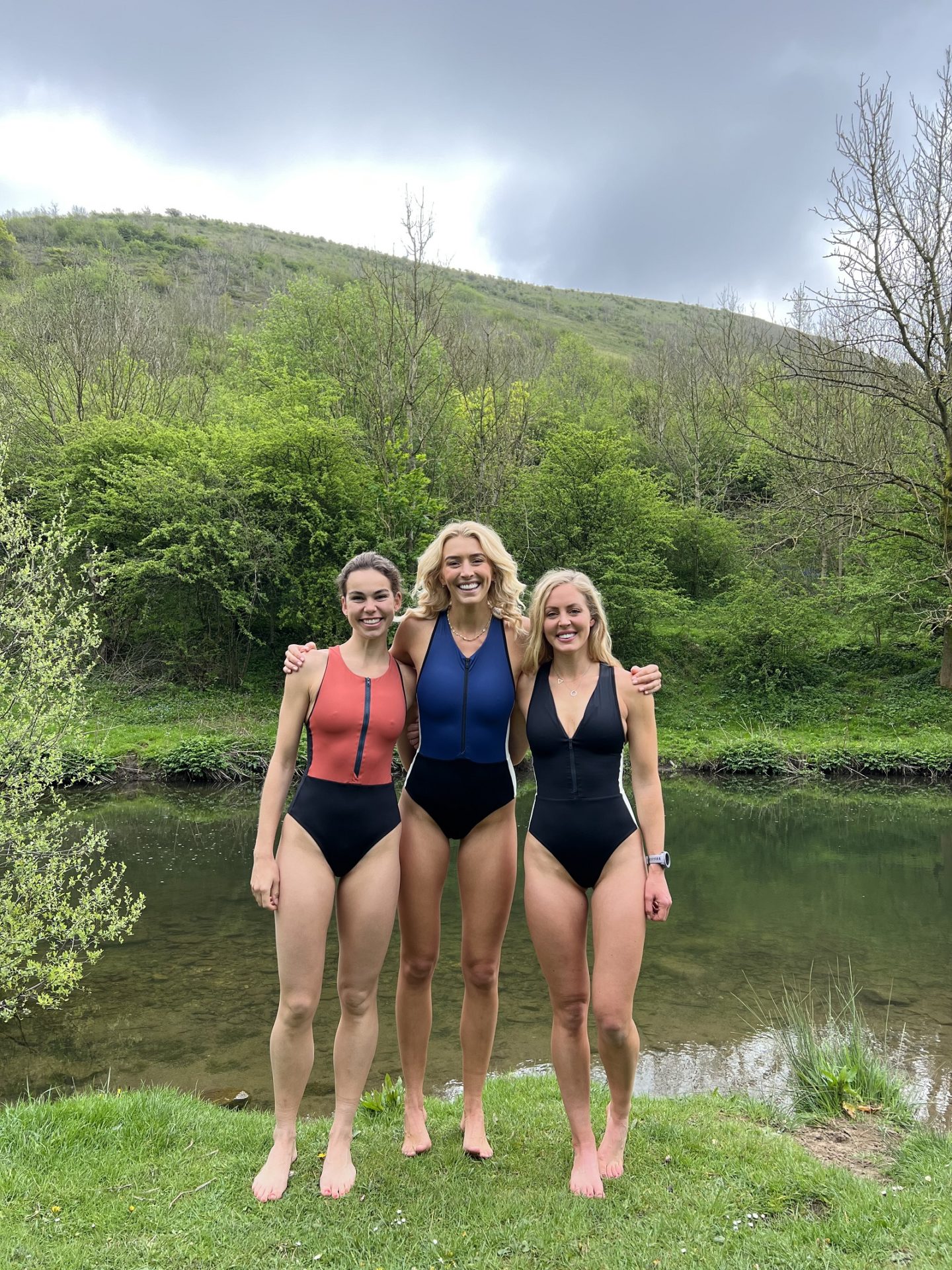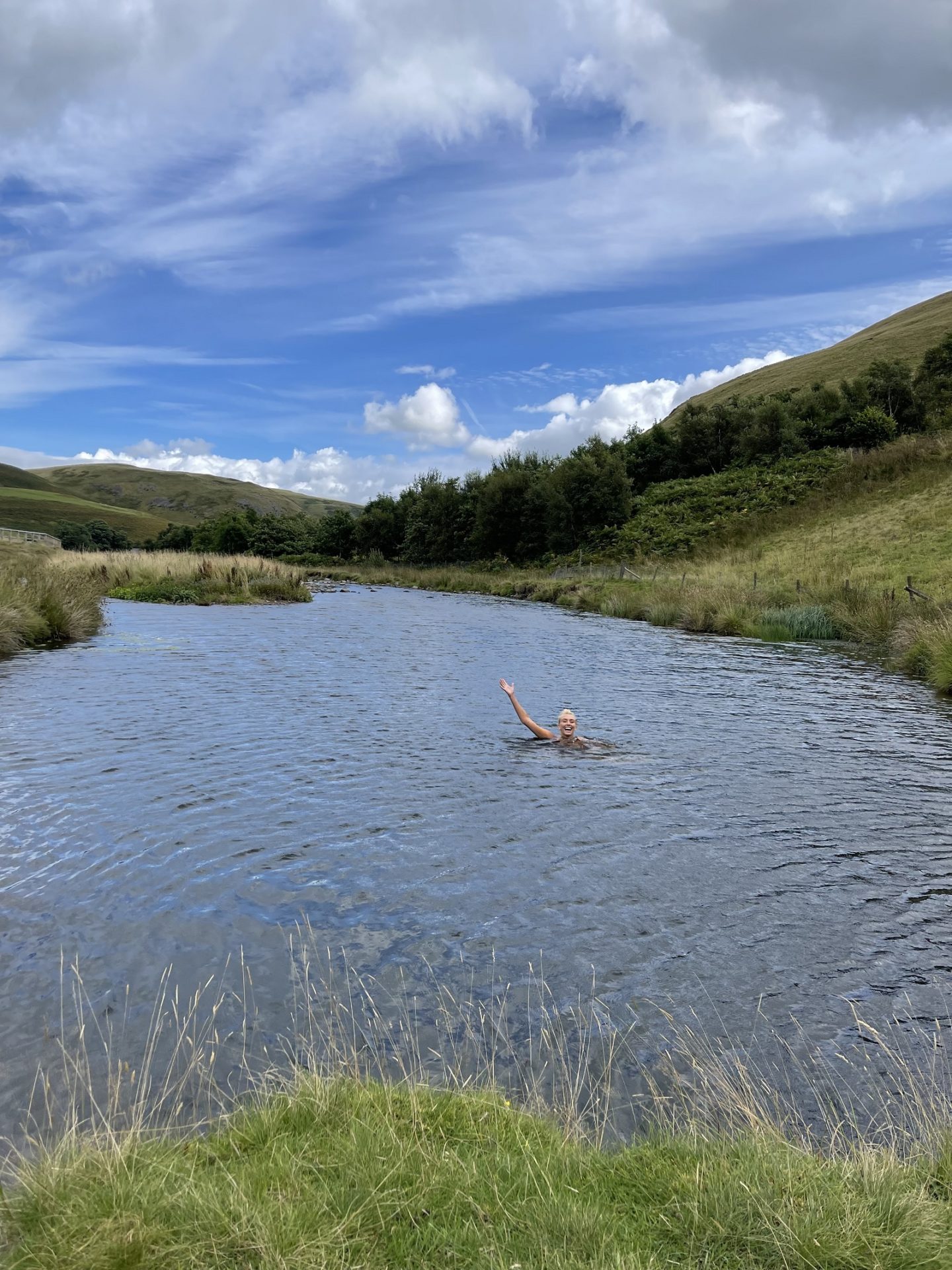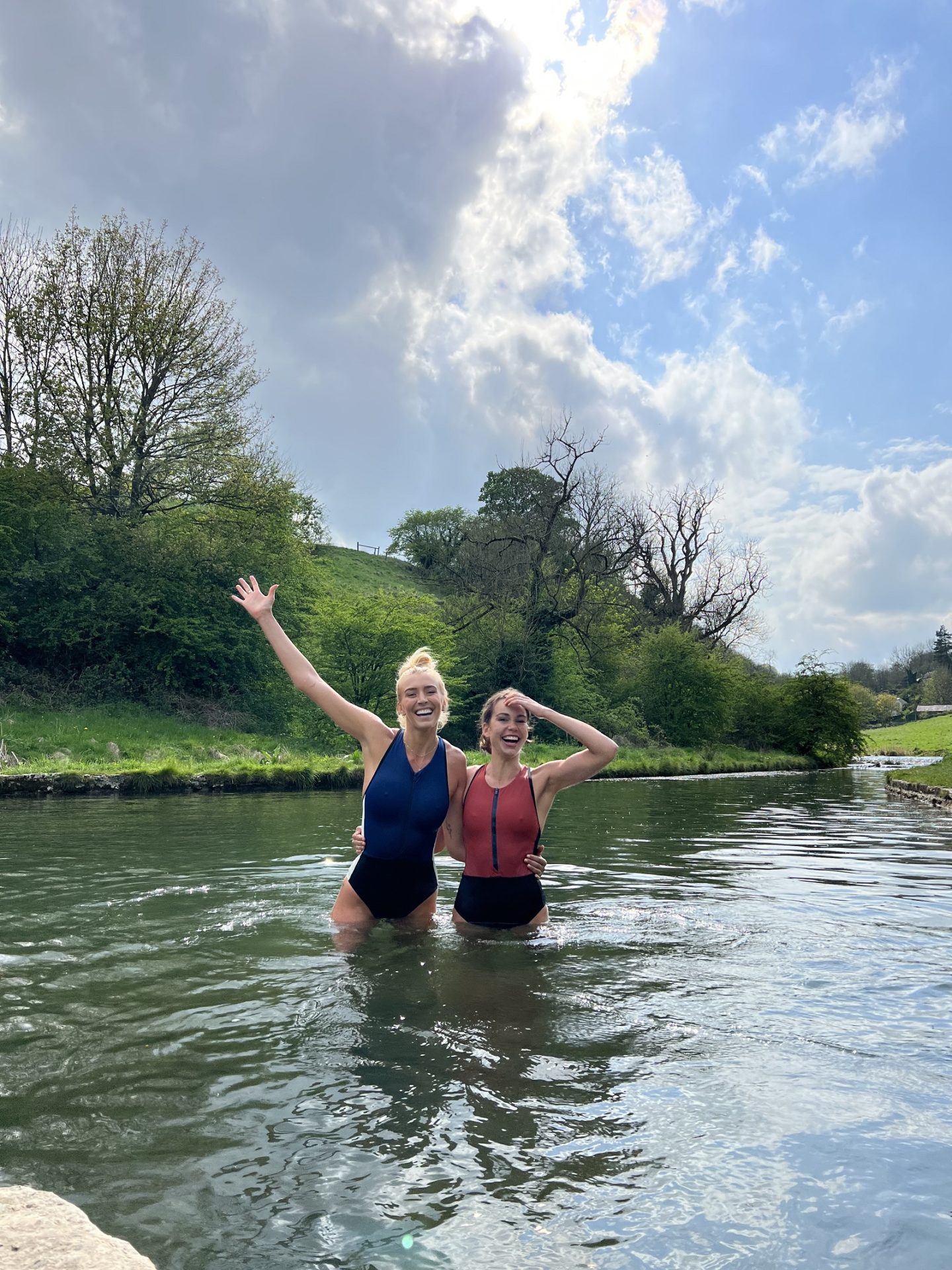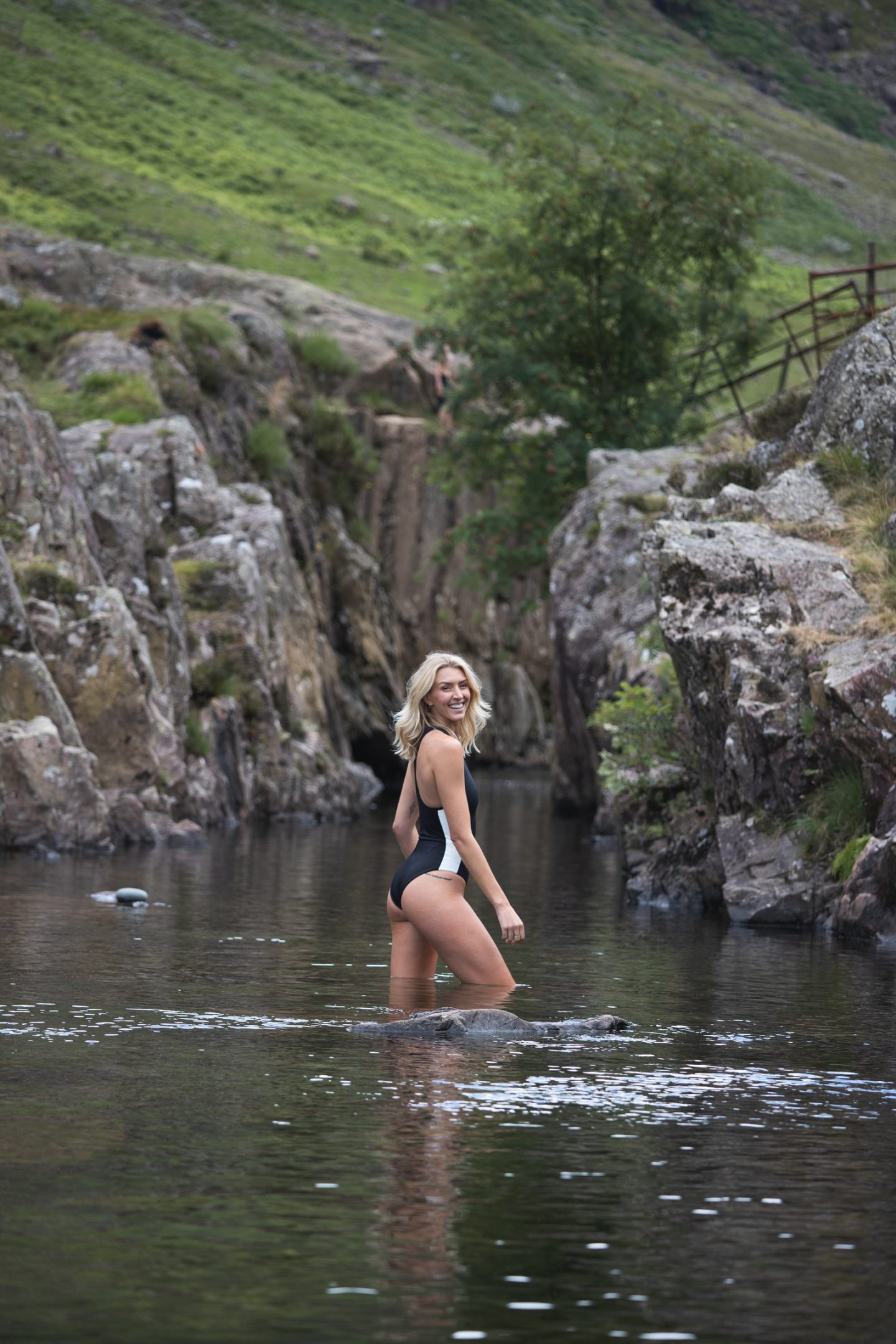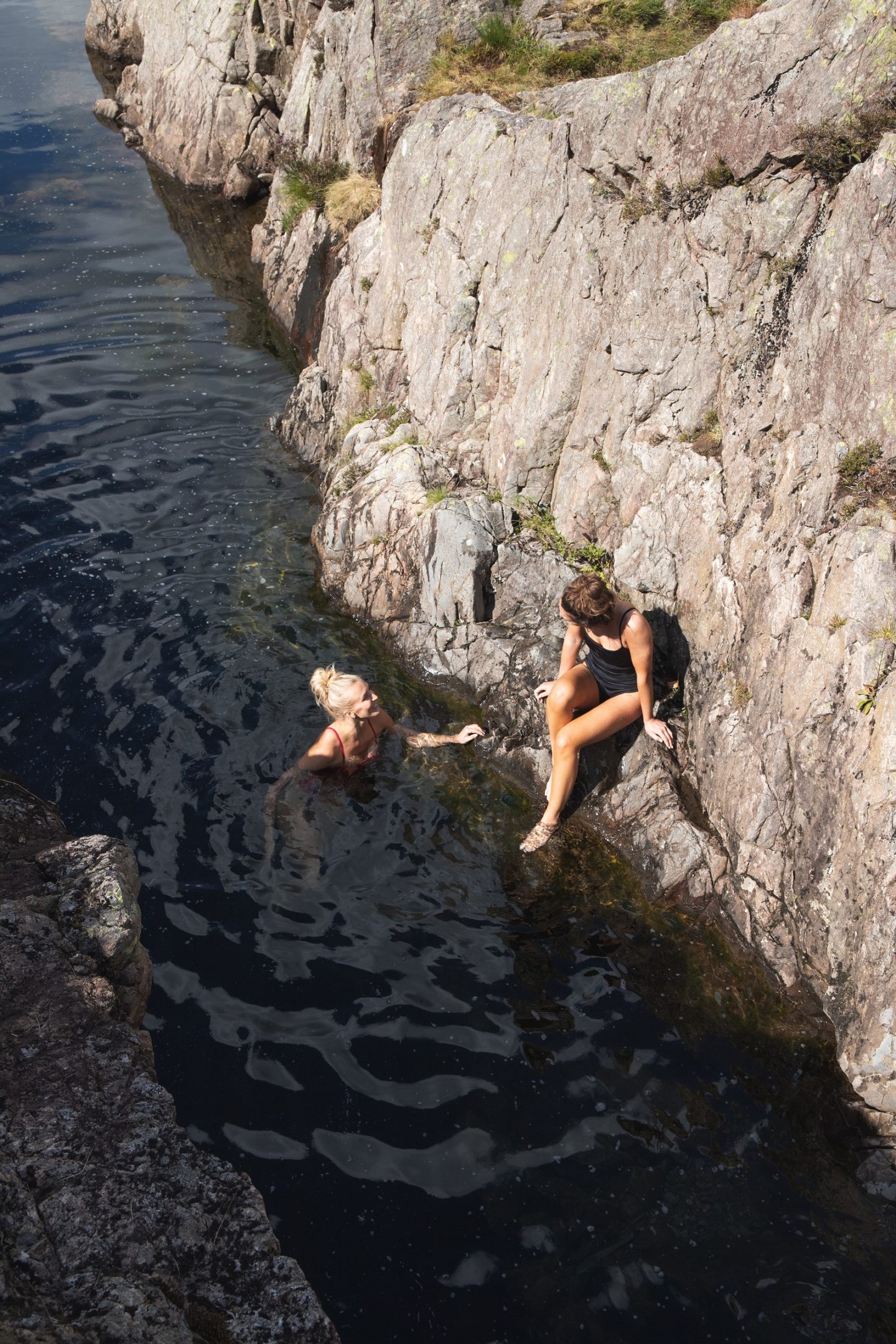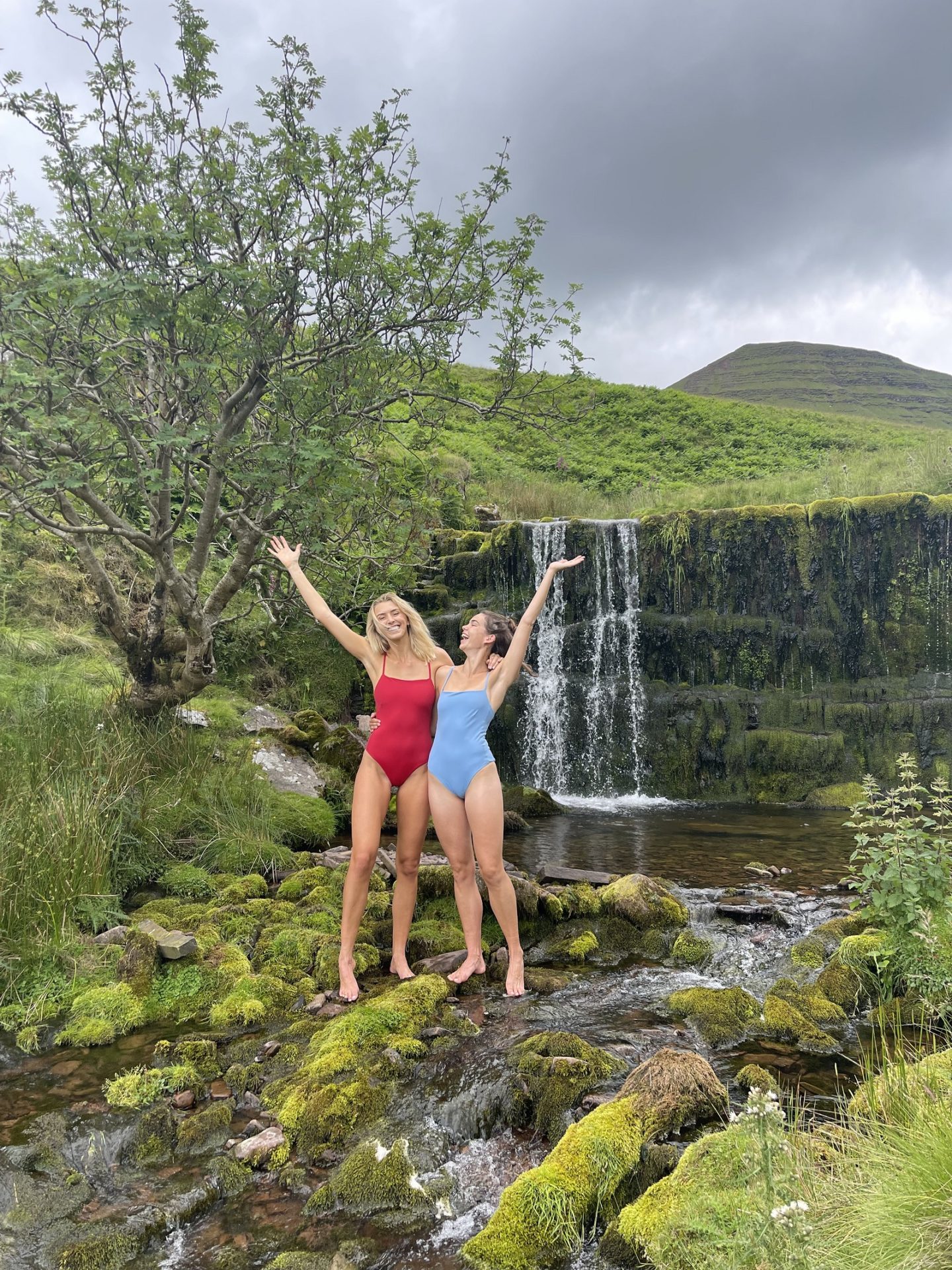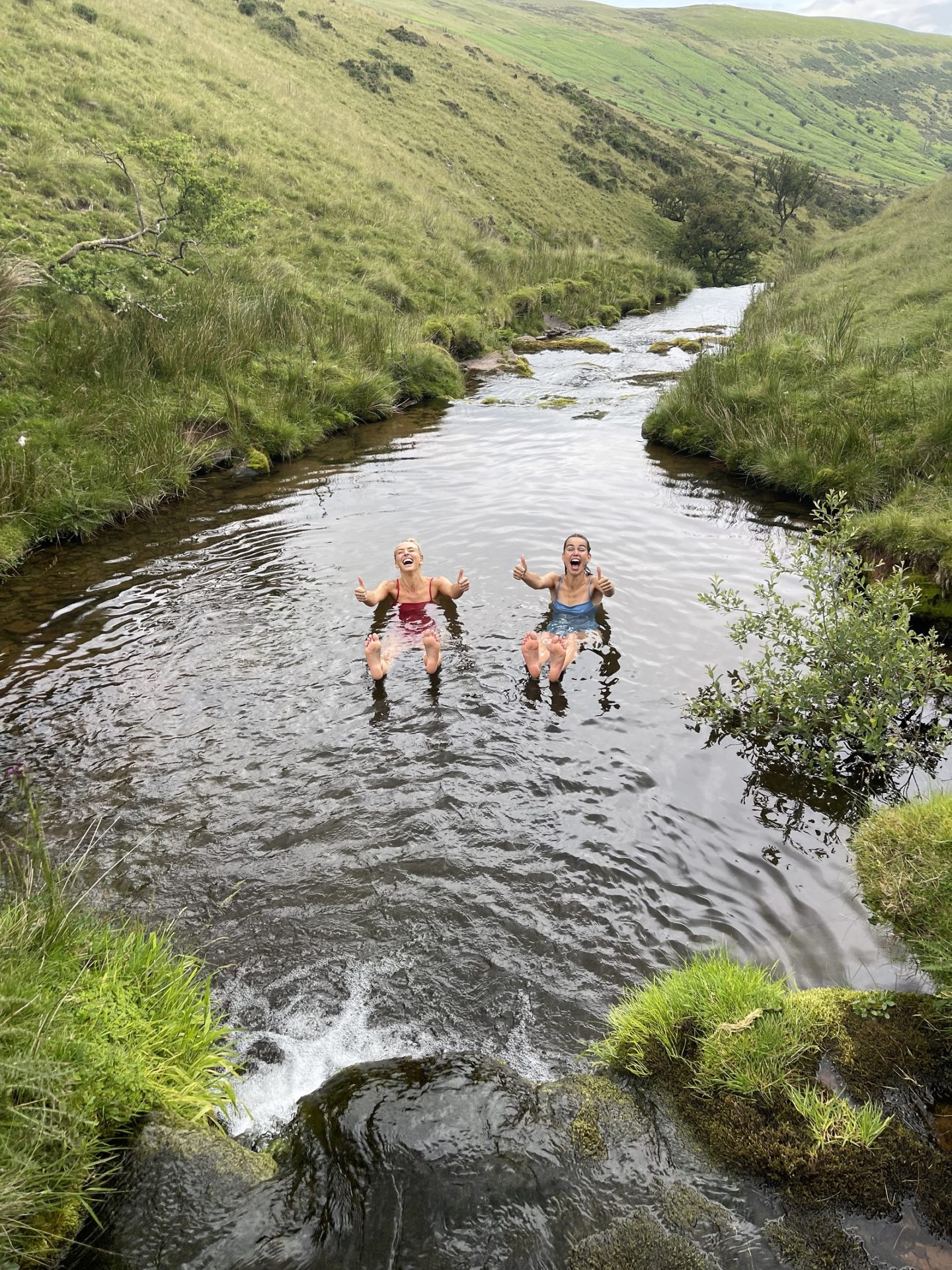Nothing quite beats the feeling of a refreshing dip in a mountain lake or a winding river. It is one of my personal favourite ways to connect with nature and enjoy the outdoors while also reaping some serious benefits for my mental and physical health. Wild swimming is becoming ever more popular, so if you’re looking to dip your toe into the cold water world, here’s a little round up of what you need to know in my beginners guide to wild swimming.
What Is Wild Swimming?
Simply put, it is swimming outside in a natural body of water, for example a river, lake, waterfall or in the sea.
What Are The Benefits of Wild Swimming?
There are numerous benefits of swimming outdoors. Mentally, it releases endorphins, reduces stress, connects you with nature and builds resilience. Physically it reduces muscle soreness, improves circulation, boosts immunity and can even elevate your metabolism. And best of all? Despite all these perks, it is both fun and free!
But Isn’t It Really Cold?
In short, yes. Yes it is. But it’s the cold nature of the water which brings so many of the benefits. If you’re new to wild swimming, then it might be easier to start in the late summer months when the water is warmest. You can build up your tolerance as you come into winter (or just pop on a wetsuit).
Remember, once you’re in the water it takes a few minutes for the cold feeling to dissipate so try to persevere. The first time you go for a wild swim, you are guaranteed to experience some mental and physical resistance. Your body and mind will try to convince you to not get in and instead to turn around and stay warm. Expect this. One of the biggest benefits of wild swimming is developing mental resilience and control over your mind, confronting your fear and pushing through the challenge. The more frequently you swim, the less and less of this resistance you will feel. I promise it gets easier!
Where Can You Wild Swim?
Wild swimming is accessible across all of the UK with very few locations being “out of bounds”, you just need a safe body of water. Generally, mountain areas will have gorges, waterfalls and tarns which are often colder. Lowland areas will have rivers and lakes which are usually a little warmer and better for longer swims.
There are a few key resources which I use to find wild swimming spots:
- The Outdoor Swim Society. They have a crowdsourced swim map of locations across the UK.
- Google. I simply search “wild swimming in XXX”, browse any articles I find and make note of the recommended spots.
- Facebook. There are numerous groups dedicated to wild swimming, for example there is one in Surrey where they organise group swims and share their favourite locations for a dip.
- Instagram. The location tag feature is a great way to scout out lakes, rivers, beaches and waterfalls.
- Local recommendations. If I am in a new area, I will always ask the locals for their favourite spots. For example, on a recent trip to Northumberland I asked a pub owner and he recommended a spot which wasn’t mentioned anywhere online and was incredible.
- My eyeballs. Once you start getting into wild swimming you soon find yourself scouting locations yourself. You’ll see a stretch of river or a mountain lake and either take an immediate dip or add it to your hit list!
Sometimes it is just a case of digging. For example if I have a hike planned, I will look at the route on Google Earth and see if there’s any lakes or rivers en route. If so, I will google these lakes/rivers with “wild swimming” and see if anyone has swam there before. I will also look at the location tag on Google or Instagram and seek out any imagery of people swimming there. I promise the research pays off!
If you’re nervous or overwhelmed, the easiest thing to do is join a local wild swimming group. It is super motivating to swim with others, they can look out for your safety and they will know the best local locations for a dip. Plus it adds a social element to your swim!
What Equipment Do You Need To Wild Swim?
In reality, all you need is yourself and your swimming gear. However, if you plan to wild swim regularly then you can start to invest in some kit. For example:
- Swimwear. I can’t resist sharing a little plug for my own sustainable swimwear brand! Stay Wild uses a zero waste factory in London to ethically create beautiful and functional designs from regenerated ocean plastic.
- Towels & dry robes. A simple towel will do the job for a casual dip but I have to admit, dry robes are 100% worth the investment. I have two, a cheaper lightweight towelling one which I can easily fit in my backpack and take on hikes, and a large fleece lined dry robe which is a little more bulky and less portable. As well as warming you up, they are very convenient to change under.
- Tow floats. If you’re planning on doing extended swims in busier waterways, these help you get more easily spotted when you’re in the water. They can also act as a small dry bag to store your essentials.
- Water shoes. If you’re swimming somewhere which has sharp rocks or rough pebbles, these make entering and exiting the water much easier.
- Wetsuits. These provide more warmth but they are restrictive and bulky, so I typically don’t swim in them unless it’s the middle of winter.
- Warm layers. Fluffy socks and cosy hats to help you heat up afterwards.
- A thermos flask full of tea. A hot drink will heat you up from the inside out after a cold swim.
- A snack. Chocolate always helps after a cold water dip.
Wild Swimming Safety Tips
- Know your limits. Don’t stay in so long that you start to shiver.
- Consider the weather. Rivers can have strong currents during or after heavy rainfall.
- Scope out the swim spot before you hop in. Check depth and flow of the water, avoiding any super fast currents or strong swells. Look for hidden rocks or submerged branches. Establish your exit route before you get in.
- Warm up quickly. To avoid any issues with “after-drop” (where your core body temperature drops) it is impotent to take off your wet gear as soon as you can, pop on something dry and start warming yourself up.
- Wear swim shoes to avoid injuries to your feet.
- Avoid swimming alone, especially as a newbie. Take a buddy with you so you can watch out for each other.
- Avoid areas which are busy with boat traffic.
- Avoid jumping or diving, you never know what is under the surface. Enter slowly.
- Never swim in canals, urban rivers, stagnant lakes or near blue-green algae.
- Never swim after consuming alcohol.
Most importantly, be respectful of mother nature. Watch where you walk, avoid trampling on any wildlife, flora and fauna. Leave no trace, taking home any litter you bring or see. If we want to enjoy the beauty of the outdoors we need to respect it.
Happy swimming!
Zanna
I mentioned some great wild swimming spots in my Northumberland and Brecon Beacons blog posts.
Did you find this post helpful? I’d love you to share it on pinterest.
Hover on image, pin and save this blog post for later…
